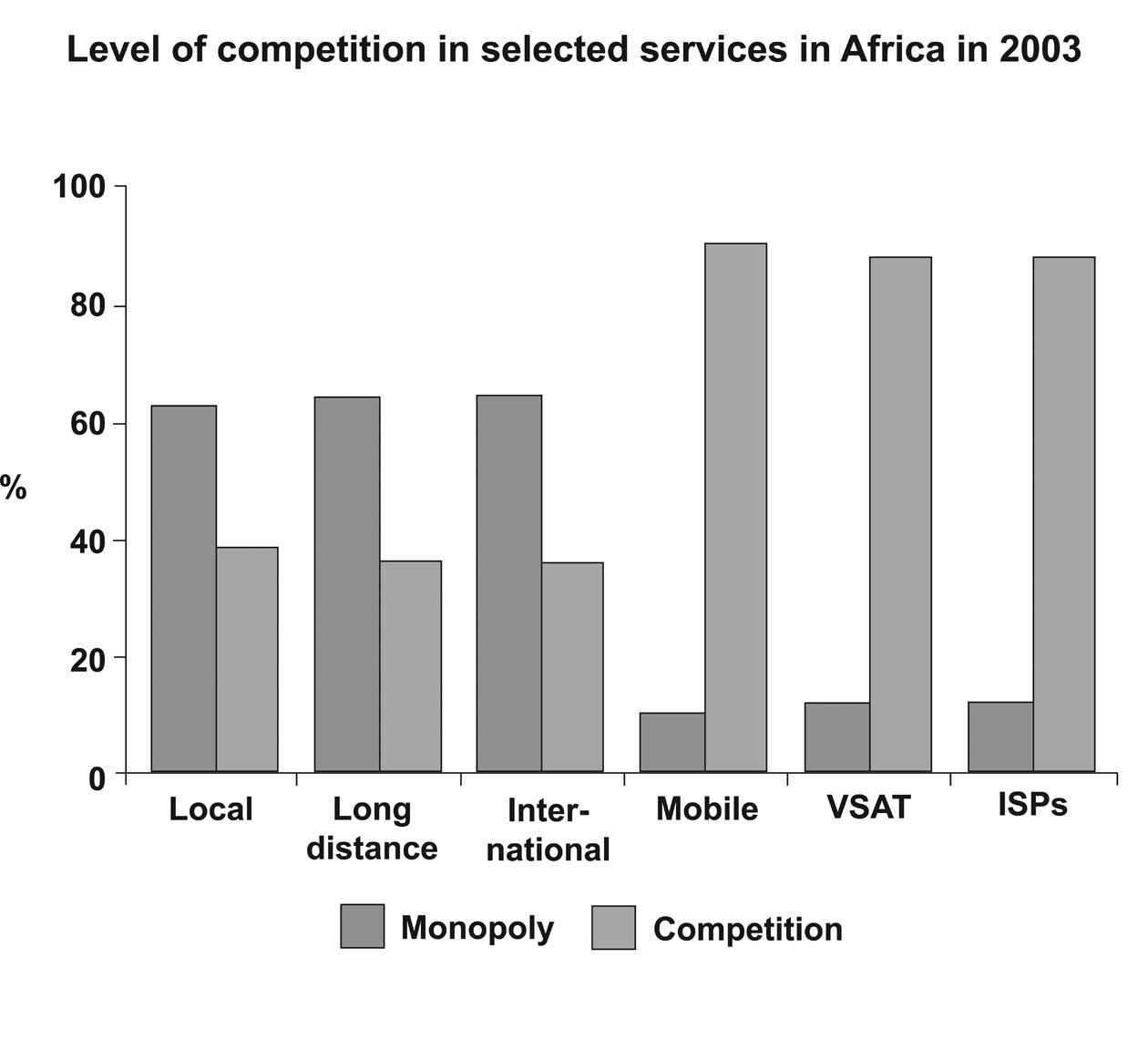from biomass, and close to 90% of the population uses biomass for cooking and heating (Holmberg, 2007). Even oil-rich SSA countries continue to rely on biomass energy to meet the bulk of their household energy requirements. In Nigeria it is estimated that about 91% of household energy needs are met by biomass. The problems associated with a reliance on biomass include inefficient heat conversion; respiratory disease; minimal poverty alleviation; and land degradation (Holmberg, 2007).
Few African villages have electricity (Torero and
Chowdhury, 2004). Most rural areas have not been able
to develop agroindustries or to tap groundwater resources
needed to support intensified and diversified agriculture.
There is a general perception that rural electrification projects
are good for the poor, but relatively little research links
rural electrification with agricultural growth and poverty
reduction.
3.3.2.3 Storage and processing
Providing agricultural storage infrastructure helps alleviate
poverty and improve food security with increased benefits
for women and children.The presence of storage facilities
has implications for the profitability and marketability of
farm produce. On-farm storage at individual farm homes
is the norm in SSA. In Uganda, for example, approximately
54% of farmers use local granaries with capacities of 0.2-
0.5 tonne and another 42% store in their residential houses
(Uganda Investment, 2005). Generally, product loss is high
(5-60%) because storage structures are defective (FAO,
1994; Haile et al., 2003). There is a need to develop improved
and more efficient storage structures for farmers.
Few large-scale commercial storage facilities exist in most SSA countries (Fay and Yepes, 2003). In Uganda, silos, warehouses and stores with capacities ranging from 2,500 to 18,000 tonnes are the main form of bulk storage (Uganda Investment, 2005). Private sector involvement in storage is limited because volume is low and the logistics associated with collecting small amounts of produce from farmers scattered over a large area are problematic.
Inadequate processing and storage infrastructure close to the main producing areas inhibits value addition. In combination with other factors, the lack of storage infrastructure contributes to low farm-gate prices for outputs and is a disincentive for resource-poor farmers to shift from subsistence to market-oriented agriculture. There is relatively little processing of agricultural produce in SSA. Small-scale cottage industries exist that specialize in processing, but they provide only first-level processing services. The major problem they face is availability of raw materials to keep the factories running to ensure their viability and profitability (Platteau, 1996; OECD, 2006).
3.3.2.4 Information and communication technology
ICT infrastructure. The development and use of ICT has tremendous
potential for increasing access to information, but
realization of this potential has been uneven. Newspapers
and radio have had the greatest market penetration but cell
phone coverage is growing rapidly. Landline telephony, Internet
access, television (particularly pay TV) and PC access
are weak in many places and nonexistent in many others.
Some SSA countries are constrained in taking advantage of
ICTs because of restrictive policies, barriers to investment,
lack of funds for extending access to their populations and
socioeconomic barriers to Internet use and ICT coverage.
Cell phone technology. The weakness of landline telephony
and the dysfunctional nature of national postal systems
prompted the adoption of email—in the limited areas where
it was available—much earlier in sub-Saharan African
countries than in some industrialized countries, where sufficient
telephone and postal infrastructures initially blunted
incentives to adopt e-mail (Levey and Young, 2002). More
recently, mobile phone coverage and adoption has followed
a similar pattern, with comparatively high rates of uptake.
From 2000 to 2003, the number of mobile phone subscribers
in sub-Saharan Africa increased from 15.7 million to 51
million (ITU, 2004); by 2004, the number had risen to 82
million (Itano, 2005).
Although there are currently more subscribers to landlines
than cell phones, this will reverse as sub-Saharan
African countries “leapfrog” over the development of their
ailing landline telephone infrastructure and rely more heavily
on cell phone coverage to meet their needs. As cell phone
markets innovate to exploit what is now understood to be
the enormous market potential of cellular technology, prices
for handsets have come down sharply and pricing options
have multiplied to cater to the various segments of the market.
The lower prices have put cell phone service within the
reach of some of the poorer strata of society, though not
the very poor. A case in point is Uganda, where competition
emerging in the late 1990s disrupted a local monopoly
and brought about positive changes in cell phone reach
and coverage, as well as in local prices (Uganda Ministry
of Works, Housing and Communications, 2003). Competition
is clearly central to the extension and adoption of many
ICTs (Figure 3-1) (ITU, 2004).
The implications of increased access to agricultural
knowledge are suggested in reports of farmers using cell
phone technology to send and receive market informa-

Figure 3-1. Level of competition in some ICT services in Africa in
2003. Source: ITU, 2004.